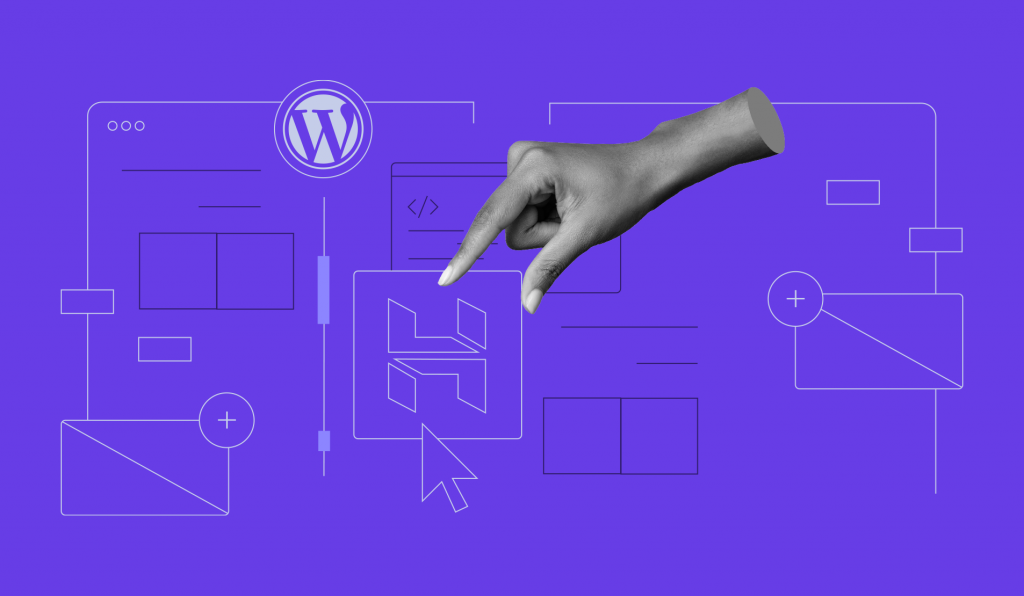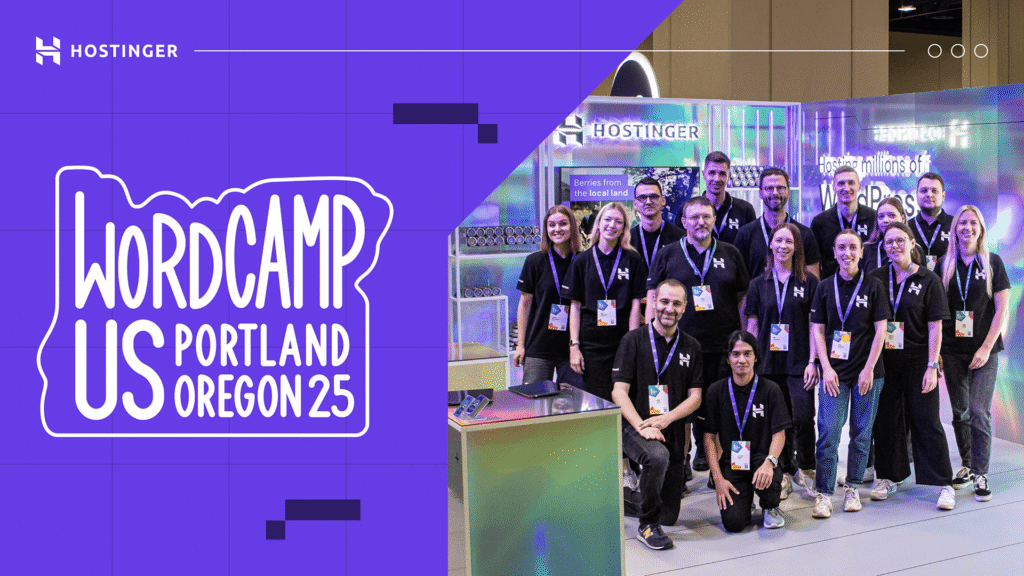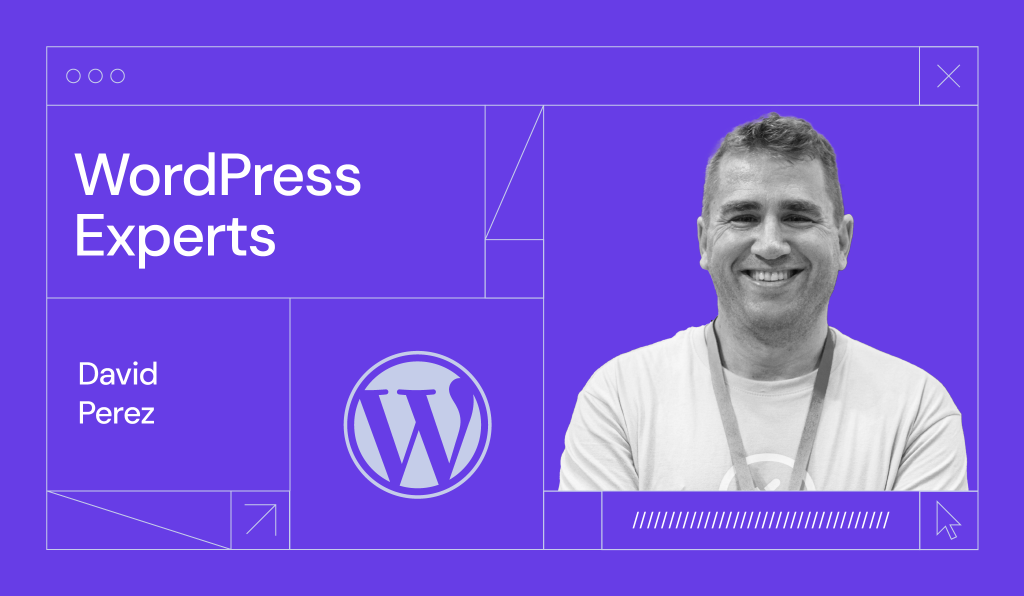Leonardus Nugraha: Documenting Moments and Advancements
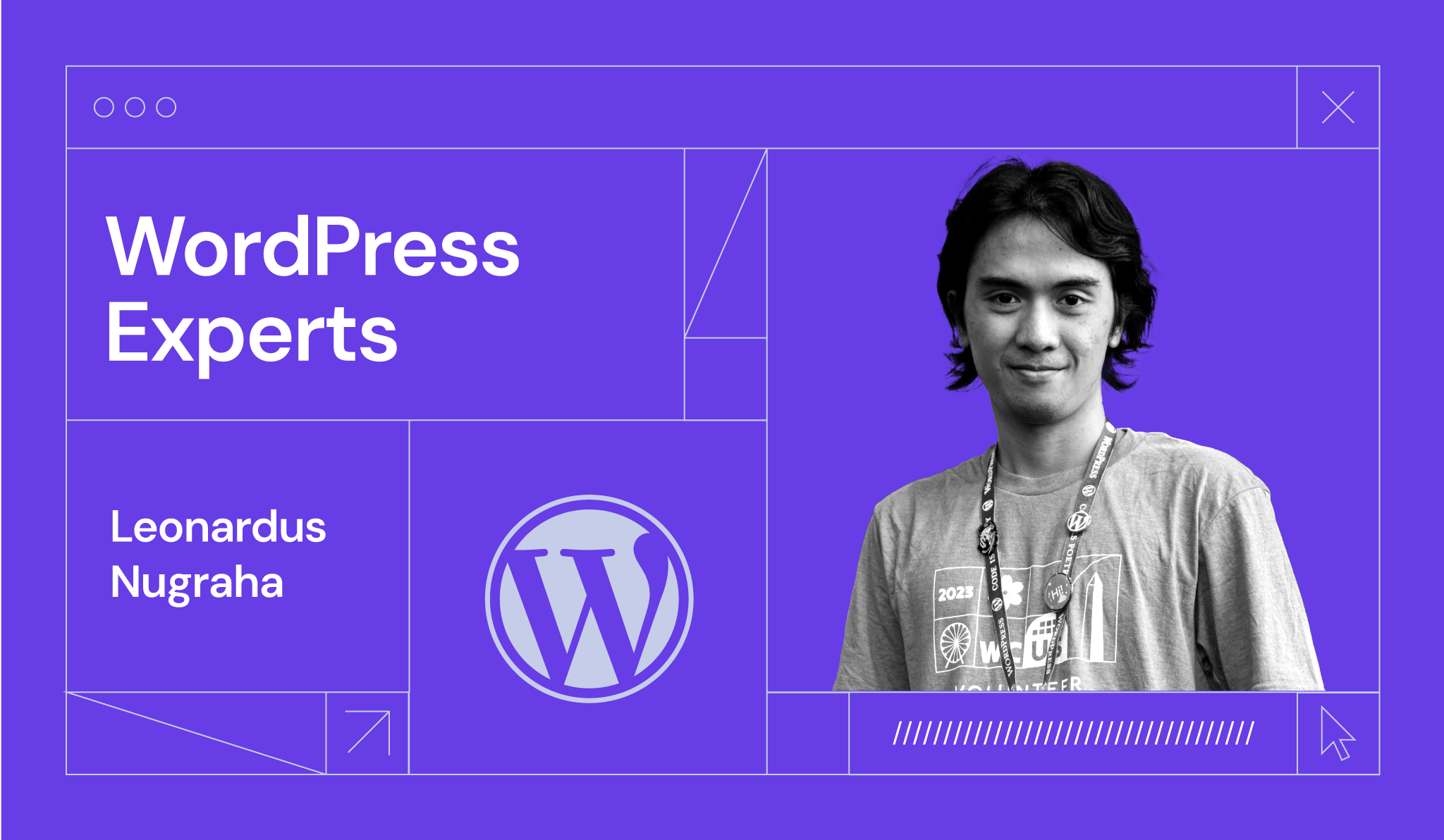
Leonardus Nugraha, or Leo for short, is Hostinger’s own Content Specialist for the WordPress category. Hailing from Bogor, Indonesia, which is known for its lush botanical garden, Leo is drawn to photographing his rich surroundings. But there’s also another thing he enjoys documenting – the advancements of WordPress.
Read on to learn how Leo entered the world of WordPress and became part of its documentation team.
Getting Into the Business
Leo first dipped his toes into WordPress at university, where he studied business management. During the IT in Business course, he had to create an eCommerce website from scratch. Among the various content management systems available, Leo opted for WordPress.
“That was the first time I learned about website building. We found out how to get a domain and hosting, install WordPress and WooCommerce, add products, and integrate payment gateways. The experience introduced me to a wider WordPress ecosystem besides the WordPress.com I had known,” Leo reminisces.
Even though he drifted away from WordPress after the project, this experience came in handy when Leo joined Hostinger as a content writer in 2020.
Besides crafting articles about WordPress, his team uses the CMS for publishing. “I had to familiarize myself with the nuances of WordPress once more, from content publishing to understanding SEO intricacies,” Leo adds.
By 2021, his role had evolved, focusing more on WordPress content. This propelled him to dive deeper into the platform’s technicalities. “I started to learn more about WordPress customization, keeping up with new versions, and following its development,” he shares.
Leo’s educational background, which includes a Master’s degree in International Business from Monash University Malaysia, also equipped him with key skills in digital marketing for his involvement in a global open-source project.
“In my major, there was a strong emphasis on collaboration and project management,” he says. “Collaborating with diverse groups and understanding different cultures during my studies has prepared me for my journey as a content marketer and a WordPress contributor.”
Diving Into WordPress Documentation
If you want to create good content about a platform, you should use it. While it is true, it wasn’t enough for Leo – he went the extra mile by diving deep into the heart of WordPress and contributing to its Documentation team. His transition from a user to a contributor reflects not only his commitment, but also the open and welcoming nature of the WordPress community.
The spark for this journey was lit shortly after Leo began writing extensively about WordPress. As an open-source platform, WordPress heavily relies on its community of contributors. When the Five for the Future initiative surfaced, Hostinger decided to take part in it.
“My manager asked me if I wanted to participate in this initiative. I was eager to contribute, and since I’m a WordPress content specialist, I naturally gravitated towards the Documentation team,” Leo says.
“I began learning about the Documentation team from the Contributor Handbook,” Leo recalls. “It’s pretty challenging at first. But then my manager introduced me to Milana Cap, the Documentation team representative, and she guided me through it.”
Leo then took a GitHub issue to learn how to create proper documentation for the first time. It was a new document request, which he found to be enjoyable. “I loved crafting new documents. It’s somehow more exciting than doing updates,” he laughs.
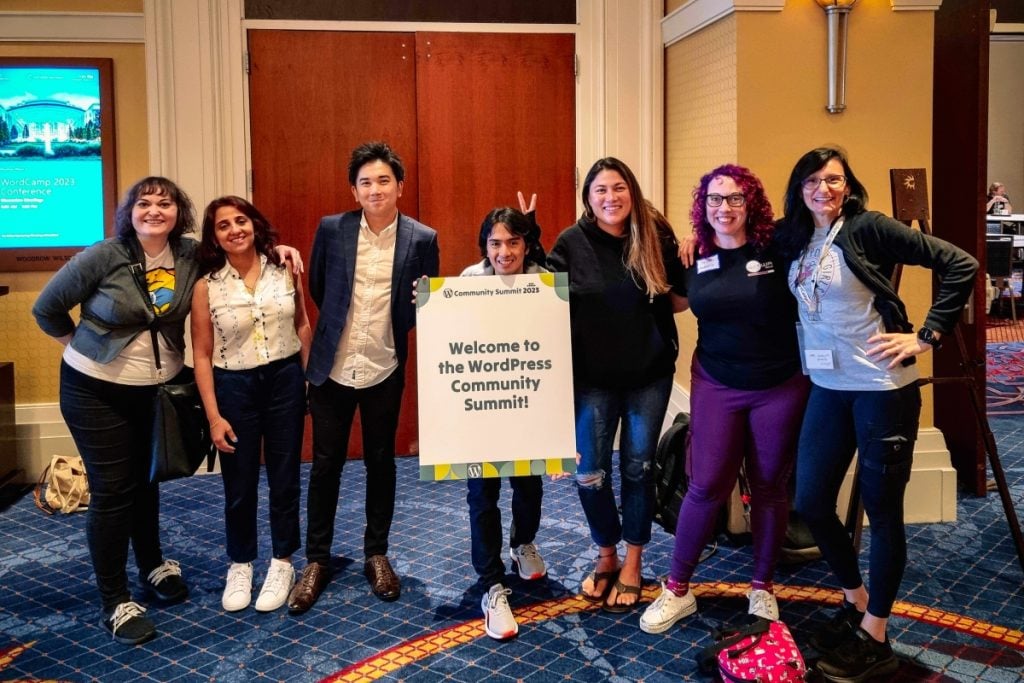
Becoming more engaged in Documentation contribution, Leo started attending the team’s weekly meetings. He’s been volunteering to facilitate the assembly from time to time. He keeps expanding his participation by constantly learning new tasks in the team, such as helping to onboard new contributors in the Documentation table during the Contributor Day in WordCamp US 2023.
“It’s fun to be at the Documentation team’s table during Contributor Day. Besides being able to work in-person with people I normally only interact with on GitHub and Slack, there are lots of cookies to try,” he says.
The cookies he mentions are the Docs team’s tradition during Contributor Days – Milana brings various cookies to munch together during the event. “In the Docs team’s Slack channel, we usually give kudos – a way to say someone is doing a good job – by giving a cookie emoji. So we bring it to life during Contributor Day at our table. Of course, we share them with other teams as well,” Leo remarks.
And to answer a common query, Leo clarifies that one doesn’t have to be a technical expert to contribute to the team. “There are two types of documentation: end-user and developer. For end-user documentation, if you use WordPress and understand its workings, you should be able to write the docs. It’s basically about guiding other users to navigate inside the platform. However, creating developer documentation needs technical knowledge to a certain extent.”
Rolling as a Documentation Team Member
The work of WordPress’s Documentation team involves more processes than solely writing the guidance. “The Docs team aims to ensure that each feature is accurately and comprehensively explained. For example, let’s take WordPress Blocks. When creating documentation about the feature, we explain what it is and detail how to use its and its features. If any visual representations are available, we will include them in the documentation, so that end-users can understand it better,” Leo explains.
Here’s the process to craft a documentation article that Leo usually goes through:
- Scour the Documentation Team GitHub repository for issues you want to work on, then assign yourself to the issue.
- Start drafting. You can do it in Google Docs, or directly on the WordPress back end if you have access.
- When writing, you can test the feature, but make sure to refer to the GitHub ticket that explains what the feature is.
- Once the draft is ready, reviewers will step in to ensure the content aligns with style guides and formatting requirements. They will also make edits if necessary.
- When it gets reviewed, the documentation can be published.
Leo also mentions that the Docs team regularly updates the existing documentation. “In every WordPress release, the Documentation release squad will check the existing documentation and see what updates must be made. This applies for both end-user and developer documentation.”
He then explains that these updates usually are made during the Release Candidate period. There can also be updates outside the release cycle, if minor changes are applied or any errors found.
As for now, there are four main categories for end-user documentation on the WordPress Documentation website – WordPress overview, technical guides, support guides, and customization. Meanwhile, the developer documentation is categorized based on more specific topics such as code reference, plugins, and the block editor.

It’s important to note that developer documentation is different from developer notes. Developer documentation covers broader technical aspects of WordPress, such as the best coding practices and how to interact with various APIs. Meanwhile, a developer note contains the details of technical changes in an upcoming WordPress release, and what developers need to know about such changes.
While Leo has never touched on developer documentation, he did work on the developer notes for WordPress 6.3. “I gathered notes about new features, code changes, and its utilization. Then I categorized them, and published them during the release cycle,” he elaborates.
To bring structure and direction, there’s a biweekly meeting within the Docs team. The session involves team updates, work progress, and brainstorming, while the triage meeting focuses on assigning GitHub issues to contributors. “So if there’s a high priority documentation, or if there are backlogs, we just post in the triage meeting and ask who wants to work on it,” Leo explains.
He then mentions that the Docs team also carries out an online Contributor Day every fourth week of the month. The event comes in the form of a three-hour Zoom session. Leo adds, “It’s an easy entry point for newcomers, and often includes onboarding calls in a separate break room.”
Beyond the Lines, Behind the Lens
Like many WordPress enthusiasts, Leo always looks forward to attending WordCamps.
“My first WordCamp was WordCamp Gresik 2022, a local WordCamp in Indonesia. There were around 200 attendees, just one conference day and one contributor’s day. It gave me the idea of what WordCamp is,” Leo recalls.
At WordCamp Gresik, besides attending presentations, he joined the Polyglots Team’s table. “There was no Documentation table, so I thought it would be great to explore other teams,” Leo adds. He unexpectedly became a General Translation Editor there, broadening his contribution horizon.
One of the things Leo loves the most about WordCamps is the opportunity to network with other WordPress enthusiasts and professionals. As a part of the Hostinger team, he also gets to interact with our Managed WordPress hosting customers. “Engaging with fellow WordPress users and industry people expanded my understanding of the global WordPress community,” he expresses.
Leo also enjoys volunteering for WordCamps, especially as a photographer. “My first experience volunteering for WordCamp was in WordCamp Asia 2023, where I volunteered as a photographer. I’ve always had a passion for photography, so this let me merge my hobby and contribution while enjoying the event,” Leo states.
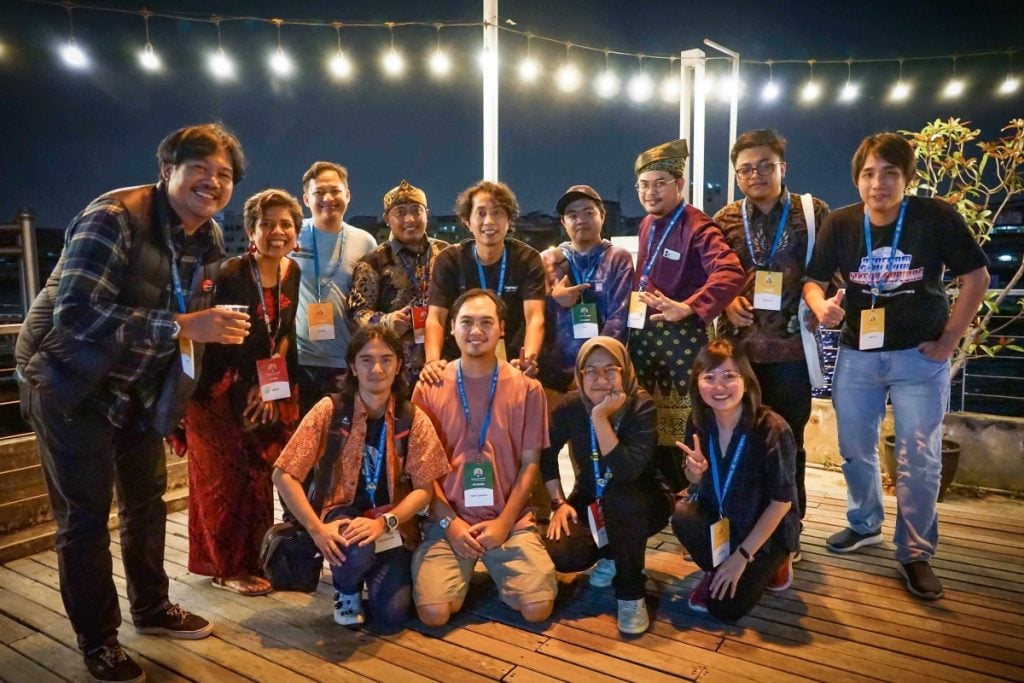
While his strong side is landscape and architecture photography, Leo is fond of capturing candid moments at WordCamps. “I adore candid shots, people in spontaneous interactions. They capture the WordCamp spirit authentically,” he says.
Although not an active member of the Photos Team, Leo has made his mark by uploading some of his photo works to the Photo Directory.
Reflecting on WordCamp memories, his thoughts always return to WordCamp Asia’s first day. “It was surreal, meeting and connecting with the global WordPress community face-to-face. These interactions, dinners, and after-parties have carved unforgettable memories,” Leo concludes.
In essence, Leo’s journey in the WordPress community is not just about contributions. It’s about connections, passion, and memorable moments that span across continents and pixels.
